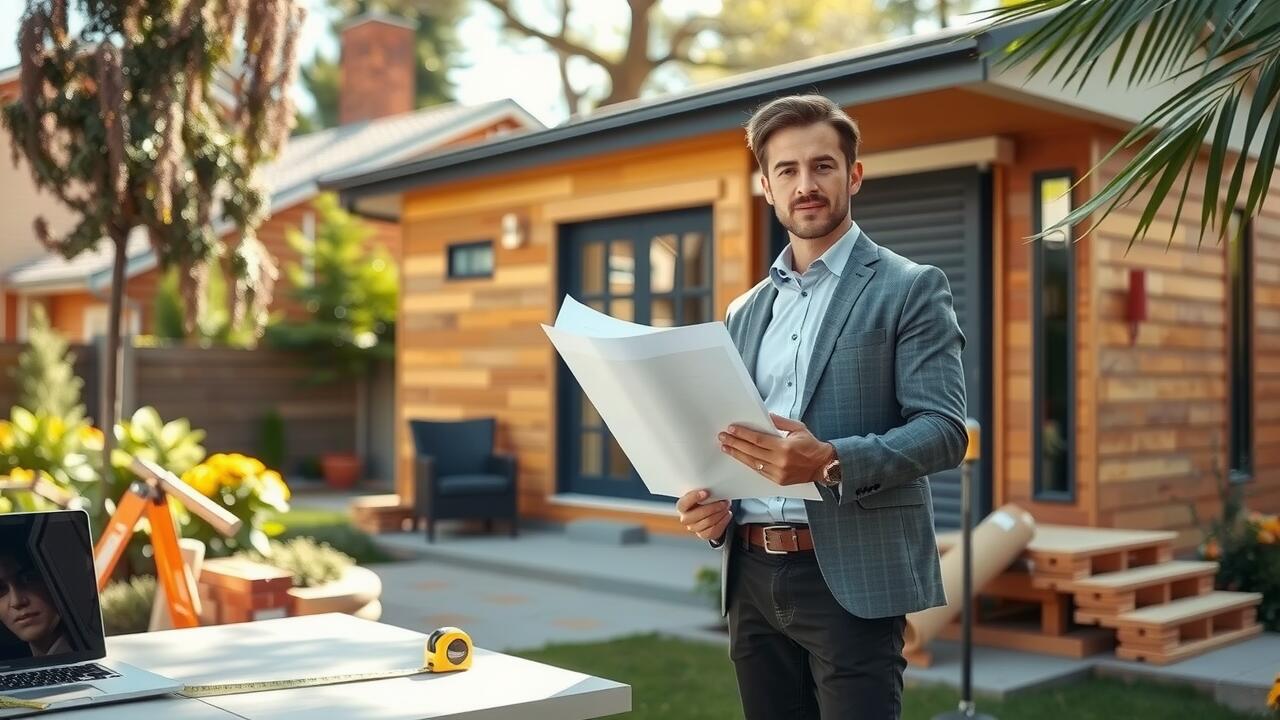
Table Of Contents
Impact of ADUs on Neighboring Properties
Accessory Dwelling Units (ADUs) often have significant implications for neighboring properties. These structures can increase property values, providing homeowners with rental income opportunities. Potential concerns arise regarding privacy, noise, and changes in neighborhood character. The presence of an ADU in Santa Clarita can impact local aesthetics, as well as the overall density of the housing environment. Homeowners and developers must consider these dynamics during the planning process.
While ADUs can enhance property use, they require careful integration into existing communities. Neighbors may experience shifts in light and air quality due to an increase in built structures nearby. Property lines become a crucial aspect to evaluate, as zoning regulations dictate how close an ADU in Santa Clarita can be constructed to adjacent properties. Understanding the local sentiment and existing community standards is essential for ensuring a harmonious coexistence among all residents.
Assessing Neighborhood Dynamics
Understanding the dynamics of a neighborhood is essential when considering the construction of an accessory dwelling unit (ADU). The presence of an ADU can influence property values and alter the sense of community. Homeowners may have varying opinions on the merits of these structures. Factors such as the style, size, and proximity of the ADU to adjacent properties play a crucial role in how neighbors perceive the change.
In areas like Saugus, Santa Clarita, community sentiment can heavily impact the acceptance of new ADUs. Local regulations may reflect neighborhood preferences, including restrictions on height, setback requirements, and architectural guidelines. Engaging with neighbors to discuss potential plans can pave the way for smoother approvals and foster positive relationships, ensuring that the introduction of an ADU enhances rather than detracts from the existing community fabric.
State-Specific ADU Laws
Local laws and regulations significantly influence where an accessory dwelling unit (ADU) can be built in relation to property lines. Different states have adopted unique regulations regarding setbacks, which dictate how far structures must be from property boundaries. For instance, in California, many cities have streamlined their ADU approval processes. However, local jurisdictions often set specific requirements that builders must adhere to, including distances from property lines.
In places like Rancho Santa Clarita, Santa Clarita, homeowners are encouraged to familiarize themselves with local zoning ordinances. The city may impose specific restrictions on the minimum distance required between an ADU and adjoining properties. Ensuring compliance with these regulations is essential before construction begins. Understanding these local laws helps prevent potential disputes with neighbors and ensures adherence to community guidelines.
Examples from Various States
California has specific regulations regarding accessory dwelling units (ADUs), reflecting the state’s efforts to address housing shortages. In Santa Clarita, for example, homeowners can construct an ADU on their property as long as they maintain a certain distance from the property line, typically adhering to a minimum set by local ordinances. This distance often varies depending on the zoning of the area and ensures that the new construction respects neighboring properties while maximizing the use of available land.
In contrast, Texas has different regulations, with cities like Austin allowing for more flexibility in ADU construction. Homeowners can usually build closer to their property lines, provided they meet zoning requirements and neighborhood standards. This helps foster a diverse housing market while enabling property owners to utilize their land more effectively, creating a more accommodating environment for various types of dwellings, including an ADU in Santa Clarita.
Building Codes and Permitting
Building codes and permitting processes significantly influence the construction of an ADU in Santa Clarita. Local regulations outline the specifics, such as setbacks from property lines, maximum height limitations, and overall design criteria. Homeowners must engage with the planning department to ensure that their ADU will meet all necessary standards. Navigating these requirements often includes submitting plans for review and obtaining permits before any construction can begin.
Compliance with local building codes is essential to avoid potential fines or delays. These codes ensure safety and sustainability in construction, impacting not only the ADU itself but also the surrounding community. Homeowners can consult with architects or contractors experienced in local regulations to facilitate a smoother permitting process. Being well-informed about these guidelines will help streamline the path to building an ADU in Santa Clarita.
Ensuring Compliance with Building Codes
When constructing an ADU in Santa Clarita, homeowners must navigate various building codes and regulations. These codes dictate the standards for structural integrity, safety measures, and overall design. Familiarizing oneself with local requirements is essential, as non-compliance can lead to costly penalties or the need for costly redesigns. Local building departments typically provide guidelines and resources, assisting homeowners in understanding necessary permits and inspections for their projects.
The process of ensuring compliance involves careful planning and sometimes collaboration with licensed professionals. Architects and contractors can offer valuable insights into code requirements, helping to streamline the building process. In Santa Clarita, obtaining a permit for an ADU often entails submitting detailed plans that illustrate adherence to zoning regulations and safety codes. Homeowners should prioritize these steps to avoid potential setbacks and ensure their ADU project moves forward smoothly.
FAQS
What is an Accessory Dwelling Unit (ADU)?
An Accessory Dwelling Unit (ADU) is a secondary housing unit located on the same lot as a primary residence. It can be a standalone structure, an addition to the main home, or a converted space within it.
How close to my property line can I build an ADU?
The distance you can build an ADU from your property line varies depending on local zoning laws and building codes. Many jurisdictions have specific setback requirements that dictate how far structures must be from property lines.
Are there different setback requirements in different states?
Yes, setback requirements for ADUs can vary significantly from state to state and even within different municipalities. It’s important to check local regulations to determine the exact distance required.
Do I need a permit to build an ADU?
Yes, most jurisdictions require a permit to build an ADU. This process typically includes submitting plans for approval and ensuring that your ADU meets local building codes and zoning regulations.
What factors can affect the construction of an ADU near my property line?
Factors that can affect ADU construction near property lines include local zoning laws, building codes, fire safety regulations, and the impact on neighboring properties. It’s essential to consult local regulations and possibly speak with a zoning official.



